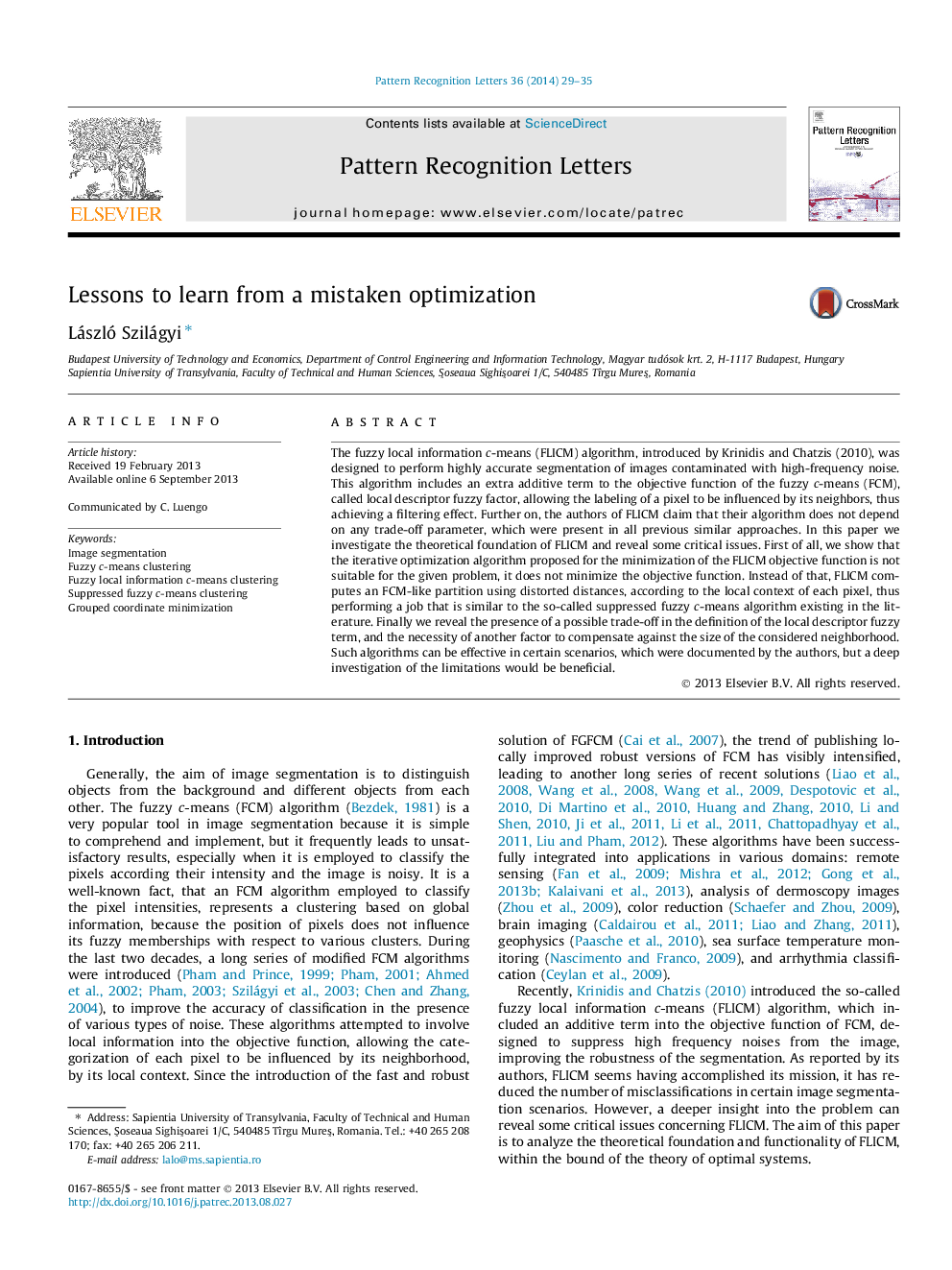| کد مقاله | کد نشریه | سال انتشار | مقاله انگلیسی | نسخه تمام متن |
|---|---|---|---|---|
| 533907 | 870190 | 2014 | 7 صفحه PDF | دانلود رایگان |
• FLICM was proposed as robust image segmentation algorithm derived from fuzzy c-means.
• A deep insight is given, into the theoretical foundation of FLICM algorithm.
• Several critical issues of FLICM’s objective function are revealed.
• FLICM is identified as a non-optimal clustering algorithm related to suppressed FCM.
• Solutions are proposed to improve FLICM’s accuracy in image segmentation.
The fuzzy local information c-means (FLICM) algorithm, introduced by Krinidis and Chatzis (2010), was designed to perform highly accurate segmentation of images contaminated with high-frequency noise. This algorithm includes an extra additive term to the objective function of the fuzzy c-means (FCM), called local descriptor fuzzy factor, allowing the labeling of a pixel to be influenced by its neighbors, thus achieving a filtering effect. Further on, the authors of FLICM claim that their algorithm does not depend on any trade-off parameter, which were present in all previous similar approaches. In this paper we investigate the theoretical foundation of FLICM and reveal some critical issues. First of all, we show that the iterative optimization algorithm proposed for the minimization of the FLICM objective function is not suitable for the given problem, it does not minimize the objective function. Instead of that, FLICM computes an FCM-like partition using distorted distances, according to the local context of each pixel, thus performing a job that is similar to the so-called suppressed fuzzy c-means algorithm existing in the literature. Finally we reveal the presence of a possible trade-off in the definition of the local descriptor fuzzy term, and the necessity of another factor to compensate against the size of the considered neighborhood. Such algorithms can be effective in certain scenarios, which were documented by the authors, but a deep investigation of the limitations would be beneficial.
Journal: Pattern Recognition Letters - Volume 36, 15 January 2014, Pages 29–35
